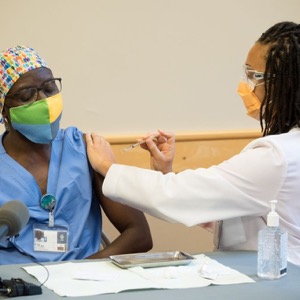By Ethan Covey
Although the COVID-19 pandemic increased attention to hand hygiene, did it really have a lasting impression?

Hand hygiene increased greatly during the first wave of the pandemic, but has fallen sharply since, according to a behavior study presented during IDWeek 2021 virtual meeting (poster 422).
“Hand hygiene is an important infection prevention and control practice to limit the transmission of infection, including COVID-19, in a health care setting,” said Victoria Williams, MPH, an infection prevention and control epidemiologist at Sunnybrook Health Sciences Centre, in Toronto.
To evaluate the long-term hand hygiene performance through subsequent waves of the pandemic, Ms. Williams and her colleagues studied hand hygiene performance at 56 inpatient, acute care units located in six university and seven community acute care hospitals in Ontario.
An electronic monitoring system was used to track the use of alcohol hand rub and soap sink dispensers located in and outside of patient rooms. Data were collected from Nov. 1, 2019, through May 31, 2021, and organized into a pre-pandemic baseline period and three subsequent COVID-19 waves:
- wave 1 (March 1 through June 30, 2020);
- wave 2 (Oct. 1, 2020, through Feb. 28, 2021); and
- wave 3 (March 1 through May 31, 2021).
During the baseline period of Nov. 1 through Dec. 20, 2020, median hand hygiene adherence was 43% and peak adherence reached 49%.
Hand hygiene performance began to rise before arrival of the first COVID-19 wave in Ontario, likely as news began to spread about the pandemic. During wave 1, adherence rose sharply, reaching a median of 64% and peak of 79%.
However, the improvement was not sustained. Hand hygiene adherence returned to baseline following wave 1 of the pandemic, and did not measurably increase over the course of wave 2 (49% median; 53% peak) or wave 3 (47% median; 52% peak).
“The increase in hand hygiene adherence seen during wave 1 of the COVID-19 pandemic indicates high levels of adherence are possible in response to events,” Ms. Williams said. “But quality improvement initiatives are required to sustain the change in practice.
“In this specific instance,” Ms. Williams continued, “the improvement was likely associated with fear and desire for self-preservation in the context of a novel pathogen. Once the perceived risk of COVID-19 had decreased, hand hygiene decreased as well, despite subsequent community waves of infection.”




